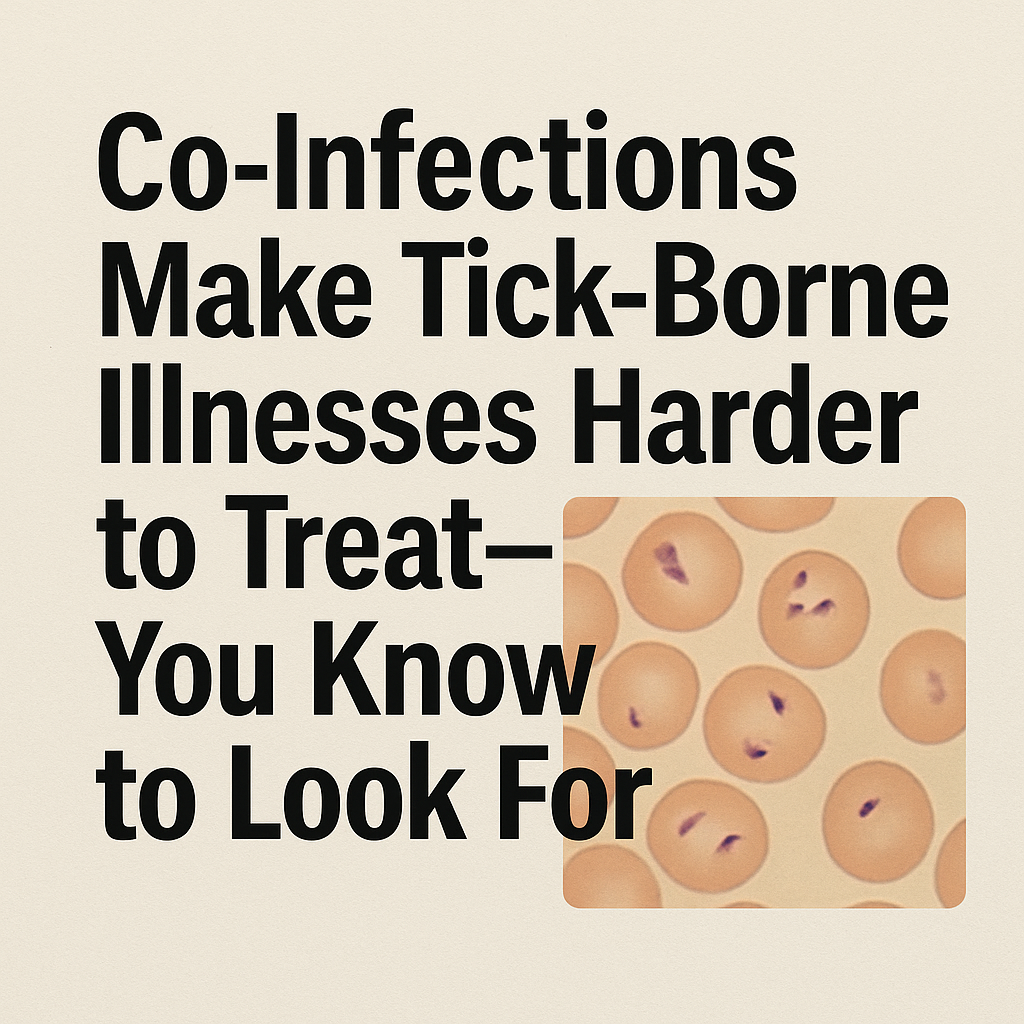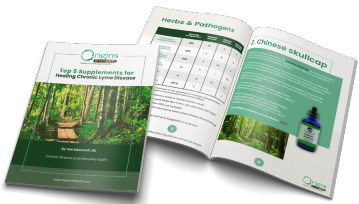Many patients treated for Lyme disease continue to feel unwell—experiencing fatigue, brain fog, or strange symptoms that seem to defy explanation. Why?
The answer may be hidden in something often overlooked: tick-borne co-infections.
❝ A patient might be treated for Lyme, but the treatment would not affect the Babesia parasites, and the patient may not feel better. ❞
—Nicole Baumgarth, Director, Johns Hopkins Lyme & Tickborne Diseases Institute
Here’s what you need to know:
-
Co-infections like Babesia, Borrelia miyamotoi, and Anaplasma are often transmitted in the same tick bite that carries Lyme. Other vector-borne illnesses, like Bartonella, can also play a role in chronic illness.
-
These infections require different diagnostics and treatment plans than Lyme alone.
-
If a patient is only treated for Lyme, other infections can be missed, leaving them chronically ill.
Q: What are the most common Lyme co-infections?
A: Babesia (a malaria-like parasite), Bartonella (linked to neurological symptoms), and Anaplasma (which affects white blood cells).
Q: How do co-infections affect Lyme treatment?
A: Each pathogen has a unique biology—so treating Lyme with doxycycline won’t resolve Babesia, which requires antiprotozoal medications.
But here’s what I want every patient and provider to hear loud and clear:
Yes, it’s difficult. But it’s far less difficult when you know what to look for—and have the right training to act on it.
If you’re a provider or patient navigating persistent symptoms, this article will walk you through:
-
Signs of co-infections most doctors miss
-
How to learn how to test for them and learn treatment approaches that actually work
- I’ll also provide a link to a free training on novel, highly effective Babesia treatment
What Is Babesiosis?
Babesiosis is a parasitic infection caused by Babesia microti (and other Babesia species), which invades red blood cells and is transmitted by the same deer tick that carries Lyme disease.
While some cases are mild or even asymptomatic, Babesia can be life-altering—especially when left untreated or misdiagnosed.
Common symptoms include:
- Fever and chills
- Fatigue or exhaustion
- Body aches
- Headaches
- Nausea
- Hemolytic anemia (low red blood cell count)
But here’s what often gets overlooked:
- Persistent head pressure
- Air hunger or a feeling of not getting enough oxygen or a satisfying breath
- Day and/or night sweats
- Bone pain
- Unexplained anxiety or inner restlessness
- Worsening of symptoms after antibiotics that don’t target Babesia
These symptoms don’t just interfere with daily life—they’re often missed or dismissed as “post-treatment Lyme syndrome,” anxiety, or menopause, especially in women.
And yet they’re classic signs of an undiagnosed Babesia co-infection.
What Most Clinicians Aren’t Taught
Traditional medical training rarely equips practitioners to identify and treat Babesia effectively—especially when it overlaps with Lyme or other co-infections. This is why so many patients are treated for Lyme, but still don’t get better.
That’s exactly why I created the Lyme Disease Practitioner Certification & Mentorship Program (LDPC).
Through the LDPC, licensed healthcare providers learn:
- How to detect co-infections like Babesia early—before they become chronic…and if they are chronic, how to effectively treat them
- How to interpret labs and clinical signs in context, not isolation
- How to build treatment plans that adapt to the individual’s immune response and microbial load
- How to integrate innovative therapeutics that go beyond standard protocols
Because when patients don’t respond to Lyme treatment, it’s not always treatment failure—it’s often diagnostic oversight.
Want a Deeper Dive?
For those wanting to explore next-generation strategies for treating Babesia, check out my YouTube video:
Practitioner Training – Revolutionizing Tick-Borne Illness Treatment
In this training, I walk through:
- The common presenting symptoms of Babesiosis
- How to integrate Tafenoquine and Methylene Blue into clinical protocols
- Pitfalls to avoid when layering anti-parasitics with Lyme therapies
- Real-world clinical scenarios to improve outcomes and minimize relapses
- How to optimize oxygen utilization and red blood cell support for patients battling Babesia
It’s a must-watch if you’re serious about transforming how we approach tick-borne illness at its root.
The Bottom Line
We are at a turning point in how we understand and treat tick-borne disease. The old model—treat Lyme, and hope for the best—isn’t enough. Not when co-infections like Babesia can quietly persist and derail recovery.
We need a comprehensive, integrative, and co-infection-aware approach.
We need clinicians trained to look deeper, treat smarter, and restore hope.
That’s what we’re building through the LDPC.
If you’re a provider ready to rise to that standard—or a patient looking for one who already has—know this:
We’re out here. And we’re changing the game.
In the LDPC, we go far beyond theory—this is real-world, evidence-based, integrative training. We teach you how to recognize subtle clinical clues, interpret nuanced labs, and apply treatment protocols that don’t just follow a checklist—but follow the patient’s lived experience.
If you’re a clinician who’s tired of guesswork—or a patient who’s tired of being told it’s “just Lyme”—know this: there is a better way.
Learn more about the LDPC Lyme Training Program here.
Resources:
Newsweek article – Experts Warn of Spreading Tick Bite Disease
Get the training your patients deserve – Lyme Disease Training



